-
 Bitcoin
Bitcoin $106,754.6083
1.33% -
 Ethereum
Ethereum $2,625.8249
3.80% -
 Tether USDt
Tether USDt $1.0001
-0.03% -
 XRP
XRP $2.1891
1.67% -
 BNB
BNB $654.5220
0.66% -
 Solana
Solana $156.9428
7.28% -
 USDC
USDC $0.9998
0.00% -
 Dogecoin
Dogecoin $0.1780
1.14% -
 TRON
TRON $0.2706
-0.16% -
 Cardano
Cardano $0.6470
2.77% -
 Hyperliquid
Hyperliquid $44.6467
10.24% -
 Sui
Sui $3.1128
3.86% -
 Bitcoin Cash
Bitcoin Cash $455.7646
3.00% -
 Chainlink
Chainlink $13.6858
4.08% -
 UNUS SED LEO
UNUS SED LEO $9.2682
0.21% -
 Avalanche
Avalanche $19.7433
3.79% -
 Stellar
Stellar $0.2616
1.64% -
 Toncoin
Toncoin $3.0222
2.19% -
 Shiba Inu
Shiba Inu $0.0...01220
1.49% -
 Hedera
Hedera $0.1580
2.75% -
 Litecoin
Litecoin $87.4964
2.29% -
 Polkadot
Polkadot $3.8958
3.05% -
 Ethena USDe
Ethena USDe $1.0000
-0.04% -
 Monero
Monero $317.2263
0.26% -
 Bitget Token
Bitget Token $4.5985
1.68% -
 Dai
Dai $0.9999
0.00% -
 Pepe
Pepe $0.0...01140
2.44% -
 Uniswap
Uniswap $7.6065
5.29% -
 Pi
Pi $0.6042
-2.00% -
 Aave
Aave $289.6343
6.02%
Is a rapid rebound after breaking through the lower track of the Bollinger Band an opportunity for oversold?
A rapid rebound after a Bollinger Band breakdown may signal oversold conditions, but confirmation with RSI, volume, and candlestick patterns is essential for reliable trade entries.
Jun 19, 2025 at 03:00 pm

Understanding the Bollinger Band Breakdown
The Bollinger Band is a widely used technical analysis tool that consists of three lines: a simple moving average (SMA) and two standard deviation bands above and below it. When price action breaks through the lower band, it often signals a strong bearish move. However, a rapid rebound after such a break can raise questions about whether the market has entered an oversold condition.
Traders often interpret a break below the lower Bollinger Band as a sign of extreme selling pressure. In many cases, especially in trending markets, this breakdown may not be a reversal signal but rather a continuation of the downtrend. However, when the price quickly reverses and moves back toward the middle band or even closes above it, this could indicate a temporary exhaustion of sellers.
What Does Oversold Mean in Crypto Trading?
In cryptocurrency trading, an asset is considered oversold when its price has fallen sharply over a short period, potentially to levels that are too low relative to its intrinsic value or recent momentum. This is often identified using oscillators like the RSI (Relative Strength Index), where values fall below 30. However, Bollinger Bands do not directly measure overbought or oversold conditions; they reflect volatility and standard deviations from the mean price.
A key point to understand is that while a price touching or breaking below the lower Bollinger Band might appear to be an oversold signal, it's not always reliable on its own. It must be corroborated with other tools like volume indicators, RSI, or candlestick patterns to confirm if a reversal is likely.
Analyzing the Rapid Rebound Signal
A rapid rebound after a lower band breakout can be interpreted as a potential reversal signal, but caution is necessary. The bounce itself doesn't confirm a trend change — it simply suggests that the immediate selling pressure has subsided. To determine whether this rebound is indicative of an oversold opportunity, traders should look for:
- A strong bullish candle closing well above the lower band.
- Increased buying volume during the rebound.
- Divergence between price and momentum indicators like RSI or MACD.
If these signs are present, the rebound may offer a valid entry point for a countertrend trade or a re-entry into a larger uptrend.
How to Confirm If It’s Truly an Oversold Scenario
To increase the probability of a successful trade, consider combining Bollinger Bands with other analytical tools. Here are some steps you can take:
- Check the RSI: If the RSI is below 30 and starts to rise as the price rebounds, it may confirm an oversold condition.
- Observe Volume Patterns: A sudden spike in volume during the rebound suggests institutional or large-scale participation, which increases the likelihood of a sustainable move.
- Look for Candlestick Reversals: Bullish reversal patterns such as hammer, engulfing, or morning star formations add credibility to the bounce.
- Wait for a Retest or Close Above the Middle Band: If the price returns to and holds above the middle SMA line, it could signal a resumption of the prior trend.
These additional filters help separate genuine oversold opportunities from false breakouts or whipsaws.
Practical Steps to Trade the Rebound
If you're considering entering a trade based on a rapid rebound after a lower Bollinger Band breakout, follow these detailed steps:
- Identify the Timeframe: Choose your preferred chart timeframe (e.g., 1-hour, 4-hour, daily).
- Mark the Bollinger Band Parameters: Use the default settings (20-period SMA with 2 standard deviations) unless you have a specific strategy that alters them.
- Watch for the Breakout: Wait until the price clearly closes below the lower band.
- Monitor the Immediate Reaction: Observe how quickly the price responds. A sharp bounce within one or two candles indicates strength.
- Confirm with Other Indicators: Check for supporting signals from RSI, MACD, or volume.
- Set Entry Level: Consider entering at the close of the bullish candle that shows clear strength.
- Place Stop Loss: Set a stop loss just below the recent low or the lower band.
- Target Exit Points: Use previous resistance levels or Fibonacci extensions to set realistic profit targets.
By following these steps methodically, you can better manage risk and improve your chances of capturing a profitable move.
Common Pitfalls to Avoid
Many traders make the mistake of treating every Bollinger Band touch as a reversal signal. In reality, during strong trends, prices can ride the bands for extended periods. Entering trades solely based on a band breakout without confirmation often leads to losses.
Another common error is ignoring the broader context. For example, if Bitcoin is in a strong downtrend due to macroeconomic factors, individual altcoins may continue falling even after a quick bounce off the lower band.
Additionally, emotional trading — such as chasing a rebound without proper setup or ignoring stop-loss rules — can erode capital quickly. Discipline and adherence to a structured plan are essential.
Frequently Asked Questions
Q: Can I rely solely on Bollinger Bands to identify oversold conditions?
No, Bollinger Bands alone do not provide definitive oversold signals. They should be used in conjunction with momentum indicators like RSI or MACD for more accurate readings.
Q: What timeframes work best for analyzing Bollinger Band rebounds?
Shorter timeframes like 1-hour or 4-hour charts are suitable for intraday traders, while daily charts are better for swing traders. Always align the timeframe with your trading strategy.
Q: How long should I wait before confirming a rebound is valid?
Ideally, wait for at least one full candle to close above the lower band and show strong bullish characteristics. Multiple confirming signals reduce the risk of false entries.
Q: Is it safe to trade rebounds during a strong downtrend?
Trading against the trend is risky. During strong downtrends, rebounds are often short-lived. It's safer to look for continuation setups rather than reversal opportunities unless there's strong evidence of a shift in momentum.
Disclaimer:info@kdj.com
The information provided is not trading advice. kdj.com does not assume any responsibility for any investments made based on the information provided in this article. Cryptocurrencies are highly volatile and it is highly recommended that you invest with caution after thorough research!
If you believe that the content used on this website infringes your copyright, please contact us immediately (info@kdj.com) and we will delete it promptly.
- BAY Miner & XY Miners: Unlock Daily Earnings with BTC, DOGE, and LTC Cloud Mining
- 2025-06-20 10:25:12
- Decoding the Aaluxx Myth: Maya Protocol and the Smart Economy
- 2025-06-20 10:30:12
- Binance Wallet, Exclusive Token, Launch: What You Need to Know
- 2025-06-20 10:45:12
- Semler Scientific's Bitcoin Bet: Bold Move or Risky Gamble?
- 2025-06-20 10:50:12
- SHIB Eyes on Whale Activity and Shibarium Upgrade: Will It Trigger a Reversal?
- 2025-06-20 10:50:12
- Crypto Bull Run Expert Prediction: Navigating the Generational Surge
- 2025-06-20 08:25:12
Related knowledge
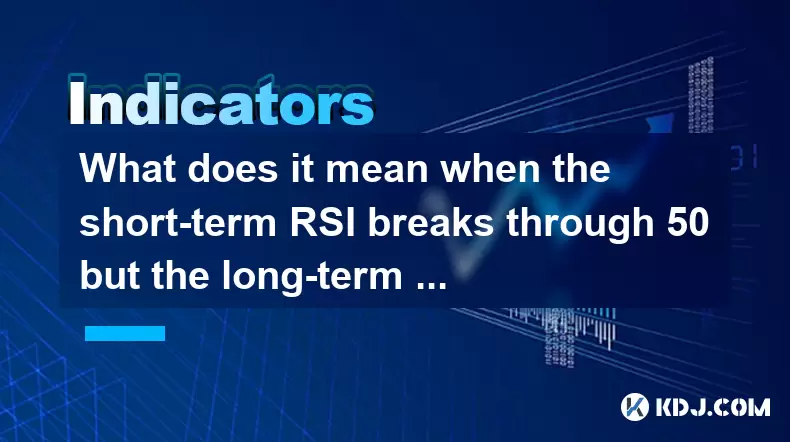
What does it mean when the short-term RSI breaks through 50 but the long-term RSI does not move in the RSI indicator?
Jun 20,2025 at 10:42am
Understanding the RSI Indicator and Its Dual-Term ApplicationThe Relative Strength Index (RSI) is a widely used momentum oscillator in technical analysis, primarily for identifying overbought or oversold conditions in an asset’s price movement. It typically operates on a scale from 0 to 100, with levels above 70 considered overbought and below 30 consid...
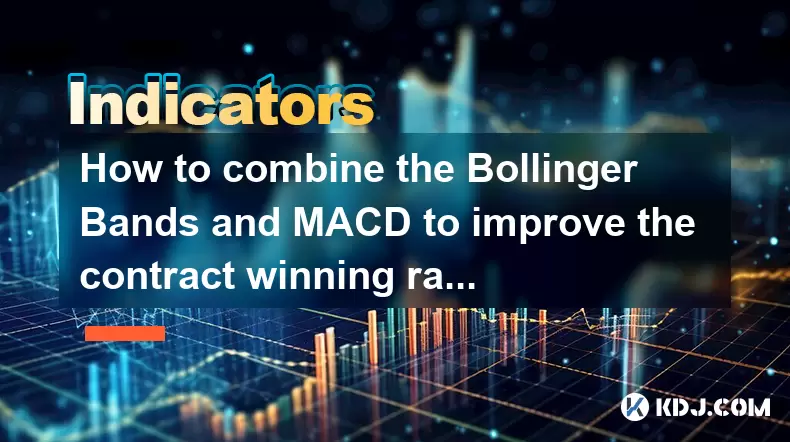
How to combine the Bollinger Bands and MACD to improve the contract winning rate?
Jun 19,2025 at 06:35pm
Understanding Bollinger Bands and MACD IndicatorsTo effectively combine Bollinger Bands and the MACD (Moving Average Convergence Divergence), it's essential to first understand what each indicator represents. Bollinger Bands consist of a middle moving average line and two outer bands that adjust based on market volatility. When prices move toward the up...
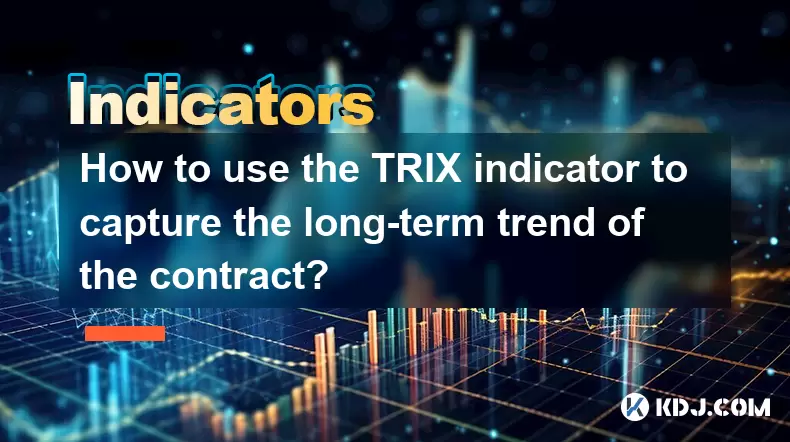
How to use the TRIX indicator to capture the long-term trend of the contract?
Jun 20,2025 at 09:14am
What Is the TRIX Indicator?The TRIX (Triple Exponential Average) indicator is a momentum oscillator used to identify oversold and overbought conditions, as well as potential trend reversals in financial markets. It is calculated by applying a triple exponential moving average to price data and then taking the percentage rate of change of that smoothed v...

How does the long lower shadow of the K line indicate the formation of the bottom of the contract?
Jun 19,2025 at 05:00am
Understanding the Long Lower Shadow in K-Line AnalysisIn cryptocurrency trading, K-line analysis plays a pivotal role in determining market sentiment and potential price reversals. A long lower shadow, also known as a long wick, is one of the most telling candlestick patterns that traders look for when assessing whether a bottom might be forming in a co...
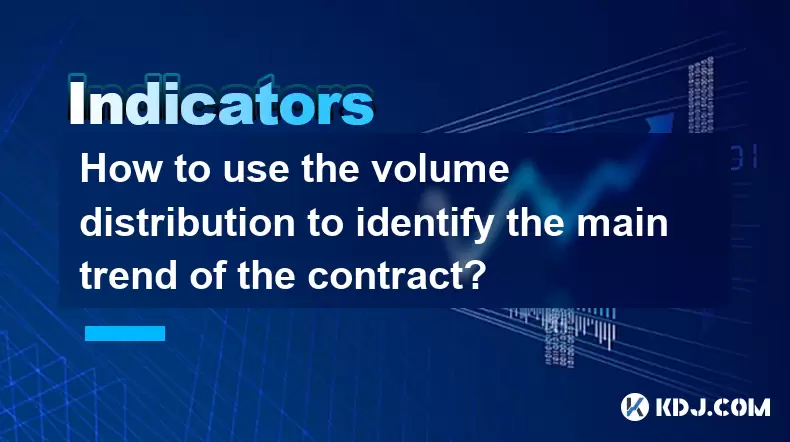
How to use the volume distribution to identify the main trend of the contract?
Jun 20,2025 at 03:56am
Understanding Volume Distribution in Cryptocurrency ContractsIn the realm of cryptocurrency trading, particularly within futures and perpetual contracts, volume distribution plays a pivotal role in deciphering market sentiment. Unlike spot markets, contract trading involves leveraged positions that can amplify both gains and losses. To navigate this com...
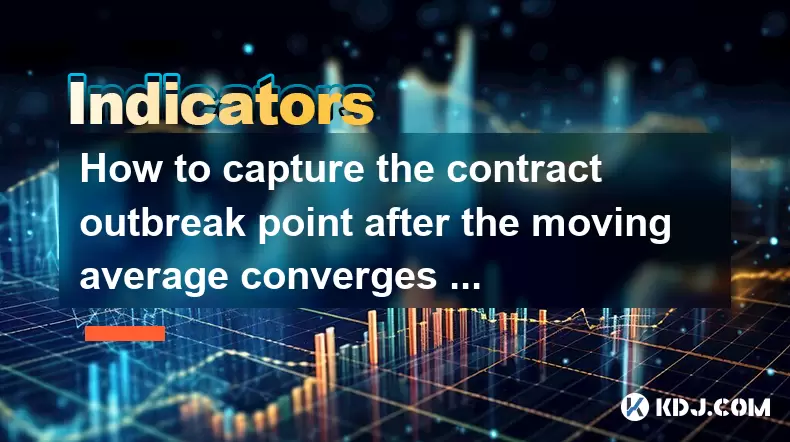
How to capture the contract outbreak point after the moving average converges and diverges?
Jun 19,2025 at 02:07pm
Understanding Moving Average Convergence and Divergence in Crypto TradingIn cryptocurrency trading, moving averages are among the most widely used technical indicators. The concept of convergence and divergence refers to how different moving averages align or separate over time. When short-term and long-term moving averages come together (converge), it ...

What does it mean when the short-term RSI breaks through 50 but the long-term RSI does not move in the RSI indicator?
Jun 20,2025 at 10:42am
Understanding the RSI Indicator and Its Dual-Term ApplicationThe Relative Strength Index (RSI) is a widely used momentum oscillator in technical analysis, primarily for identifying overbought or oversold conditions in an asset’s price movement. It typically operates on a scale from 0 to 100, with levels above 70 considered overbought and below 30 consid...

How to combine the Bollinger Bands and MACD to improve the contract winning rate?
Jun 19,2025 at 06:35pm
Understanding Bollinger Bands and MACD IndicatorsTo effectively combine Bollinger Bands and the MACD (Moving Average Convergence Divergence), it's essential to first understand what each indicator represents. Bollinger Bands consist of a middle moving average line and two outer bands that adjust based on market volatility. When prices move toward the up...

How to use the TRIX indicator to capture the long-term trend of the contract?
Jun 20,2025 at 09:14am
What Is the TRIX Indicator?The TRIX (Triple Exponential Average) indicator is a momentum oscillator used to identify oversold and overbought conditions, as well as potential trend reversals in financial markets. It is calculated by applying a triple exponential moving average to price data and then taking the percentage rate of change of that smoothed v...

How does the long lower shadow of the K line indicate the formation of the bottom of the contract?
Jun 19,2025 at 05:00am
Understanding the Long Lower Shadow in K-Line AnalysisIn cryptocurrency trading, K-line analysis plays a pivotal role in determining market sentiment and potential price reversals. A long lower shadow, also known as a long wick, is one of the most telling candlestick patterns that traders look for when assessing whether a bottom might be forming in a co...

How to use the volume distribution to identify the main trend of the contract?
Jun 20,2025 at 03:56am
Understanding Volume Distribution in Cryptocurrency ContractsIn the realm of cryptocurrency trading, particularly within futures and perpetual contracts, volume distribution plays a pivotal role in deciphering market sentiment. Unlike spot markets, contract trading involves leveraged positions that can amplify both gains and losses. To navigate this com...

How to capture the contract outbreak point after the moving average converges and diverges?
Jun 19,2025 at 02:07pm
Understanding Moving Average Convergence and Divergence in Crypto TradingIn cryptocurrency trading, moving averages are among the most widely used technical indicators. The concept of convergence and divergence refers to how different moving averages align or separate over time. When short-term and long-term moving averages come together (converge), it ...
See all articles

























































































